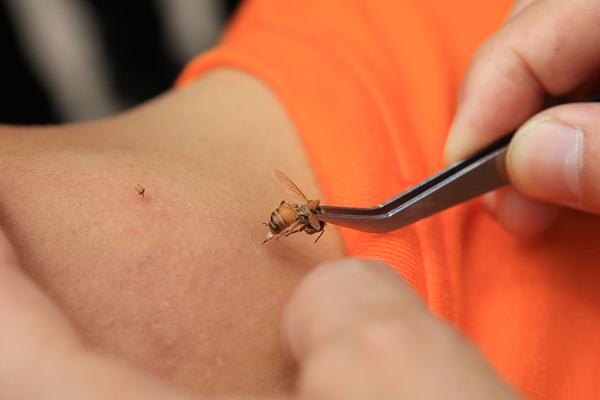【】
“These materials may have been obtained through hacking,” reads the disclaimer affixed to a tweet linking to a story from independent news outlet, The Grayzone.
Tweet may have been deleted
The tweet was originally posted on Feb. 20. However, three days later, users began to notice the label added to The Grayzone’s tweet. (It is not yet clear when exactly the label appeared.) Furthermore, readers discovered that an extra step was added when trying to retweet posts linking to The Grayzone’s story: A pop-up appeared reiterating the warning label and asking users to “help keep Twitter a place for reliable info.”
A link is included which forwards users to Twitter’s “distribution of hacked materials” policy.
Tweet may have been deleted
The Grayzone’s storysources recently hacked and leaked documents which allegedly show that the BBC and Reuters participated in a program created by the UK government to “weaken Russia’s state influence.”
This appears to be the first instance of Twitter using this particular warning label on an English-language outlet. A search on the platform found one other instanceof a version of the “hacked materials” warning label being used. This one was stamped on an Italian outlet’s tweet regarding Pfizer's COVID-19 vaccine in January.
“These materials may have been obtained through hacking or may be manipulated,” reads the earlier warning label on the tweet, which is in Italian.
Mashable has reached out to Twitter for more information. The new warning label comes after Twitter's controversial decisionto block links to a New York Poststory in October 2020, which included material from a laptop belonging to President Joe Biden’s son, Hunter Biden. Twitter was roundly criticized across the political spectrum for the action it took when the story was published and shared on its platform.
In response, Twitter updated its policiessurrounding “hacked materials” and unblocked links to the story. This new warning label is clearly a new approach to flagging news stories which are based on hacks and leaked documents.
It should be stressed again that these warning labels are being added to tweets sharing links to news stories based on hacked materials, not tweets sharing raw leaked or stolen materials themselves.
However, some Twitter users have pointed out that the New York Timesstory on Ted Cruz’s tripto Cancun was based on leaked text messages from the senator’s wife. Yet, they point out, there is no warning label placed on tweets linking to that story even though it appears to fall under Twitter’s own “distribution of hacked materials” policy.
Twitter also uses its warning labelsfeature to inform users about misinformation spreading on its platform. While this was a helpful service amid all the liesand disinformationcampaigns surrounding the 2020 U.S. presidential election, it’s not clear if this translates to “hacked materials.”
Debunked claims are proven to be false. However, the same cannot be said outright for “hacked materials.” In fact, some of the most important journalism of just this past decade was done with documents that would fall under Twitter’s “hacked materials” policy.
Would the eye-opening “Collateral murder” video that was provided to Wikileaks in 2010 by Chelsea Manning have received a warning label? Would Twitter have warned users before retweeting the many crucial investigative pieces that came out of the NSA spying documents provided to multiple news outlets by Edward Snowden?
As Will Menaker of the podcast Chapo Trap House tweeted, these “hacked materials” warning labels may very well be construed by critics as “highlighting journalism that is especially important.”
UPDATE: Feb. 23, 2021, 8:56 p.m. EST Max Blumenthal, editor of The Grayzone, provided Mashable with a statement on the warning labels:
By applying a scare label exclusively to my article, Twitter has contributed nothing to the public's understanding of news or disinformation. Instead, it has confirmed the veracity of my reporting, as well as the threat it presents to a national security state that seems to be protecting its agenda through a desperate campaign of social media censorship.
Blumenthal noted that his article that Twitter marked with the hacked materials label references a British Army unit that uses social media to help fight wars. Twitter's head of editorial in Europe, the Middle East, and Africa Gordon MacMillan is a reservist for that unit. Twitter reviewed his Army role in 2019 and found no wrongdoing, according to Business Insider. Mashable has reached out to Twitter to ask if MacMillan was involved in the decision to add the hacked materials label to Blumenthal's post.
UPDATE: Feb. 24, 2021, 9:34 a.m. EST According to Twitter, this instance is indeed the first time the "hacked materials" warning label has been used. Twitter also says that enforcement decisions are handled by its Trust and Safety Team. MacMillan, the Twitter employee referenced by The Grayzone's editor, is not part of this team or the enforcement process.
Related Video: How to recognize and avoid fake news
TopicsCybersecuritySocial MediaTwitter
相关文章

Photos show the Blue Cut fire blazing a path of destruction in California
A fast moving wildfire continued raging near San Bernadino, California, forcing the evacuation of at2025-04-16
NYT's The Mini crossword answers for April 29
The Mini is a bite-sized version of The New York Times' revered daily crossword. While the crossword2025-04-16
NYT's The Mini crossword answers for May 16
The Mini is a bite-sized version of The New York Times' revered daily crossword. While the crossword2025-04-16
What's inside Rabbit R1, Humane Ai? New teardown video reveals their guts.
The Rabbit R1 and the Humane Ai pin are two AI-focused devices that have intrigued many tech enthusi2025-04-16
Singapore gets world's first driverless taxis
SINGAPORE -- The world's first self-driving taxis started picking up passengers in Singapore on Thur2025-04-16
Best Amazon Memorial Day Sale deal: Score the Garmin inReach Mini 2 for under $300
SAVE 25%: The Garmin inReach Mini 2 satellite communicator is on sale for $299.99 at Amazon, down fr2025-04-16

最新评论